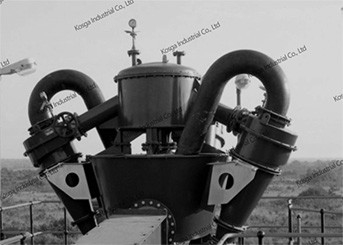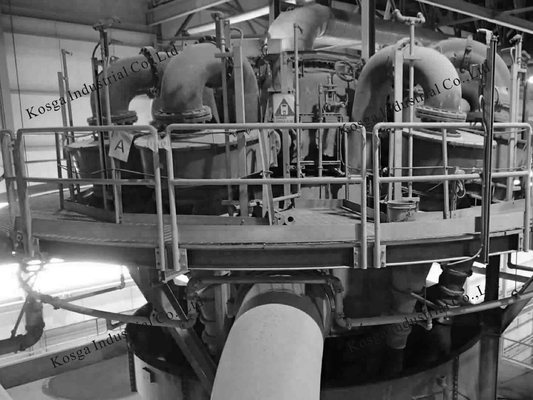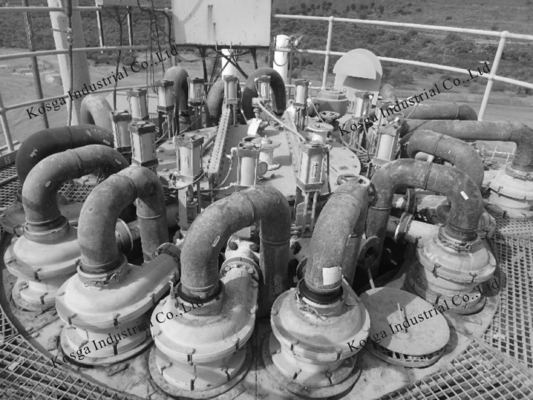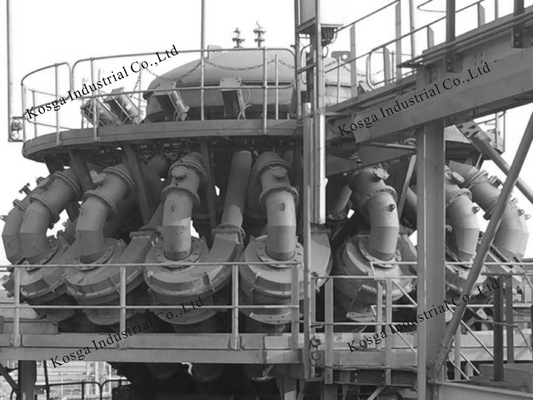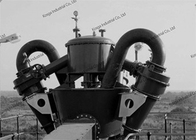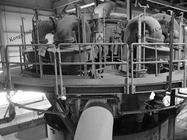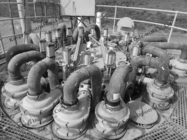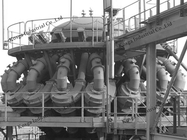Cyclones Hydrocyclone
There are two design classifications for cyclones/hydrocyclones. Uniflow or swirl tube cyclones are designed so that the clean gas or liquid leaves the cyclone in the same direction that the inlet gas flows. Uniflow cyclones are often seen in series and do not contain a conical section. The dust simply exits the cyclone with a small portion of the inlet gas stream, about 5 - 10%.
Alternatively, reverse flow cyclones have a vortex reversal allowing the clean gas to exit at the top of the cyclone. Reverse flow cyclones usually stand alone and solid dust collects in the conical portion of the cyclone for removal. In reverse flow cyclones contaminated liquid or dust-laden air enters tangentially near the top of the cyclone. Larger or heavier particles (the coarse) are thrown to the sides and slide to the bottom, where they are collected. The remaining air or liquid (the fines) reverses direction and spirals up the center of the cyclone and out the top.
A tangential inlet is the most common type of inlet because it is least expensive and most efficient. Additional inlet options are wrap around, helical and axial. Wrap around inlets are best for high throughput designs and axial inputs are often seen in multi-cyclone configurations.
cyclones/hydrocyclones For a given particle size, a portion of the particles will exit out the bottom with the underflow, and the rest will exit with the overflow. The heavier the particle, the greater the chance that it exits out the bottom.
The cutpoint size, a measure of a cyclone's performance, is defined as the particle size for which half the particles exit at the top and half at the bottom. A coarser (larger) cutpoint means that only larger particles can be separated. A finer (smaller) cutpoint means that smaller particles can be removed.
cyclones/hydrocyclones can handle flow rates ranging from 3 gpm to over 10,000 gpm. Small-diameter cyclones may be manifolded to handle larger flow rates with higher efficiency. Cyclones can also be placed in series to handle streams with irregular particle sizes or with particles that tend to flocculate .
Main Advantages:
1.Low capital cost.
2.High efficiency for 5 - 200 micron particles.
3.High volume flowrate.
4.Lack of moving parts reduces wear.s
5.Continuous or batch removal of underflow requires virtually no downtime for maintenance or recovery.
6.Versatile application.
7.Small relative to other separation equipment.
8.Can operate at a wide range of temperatures and pressures


